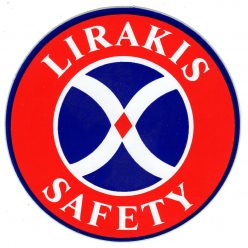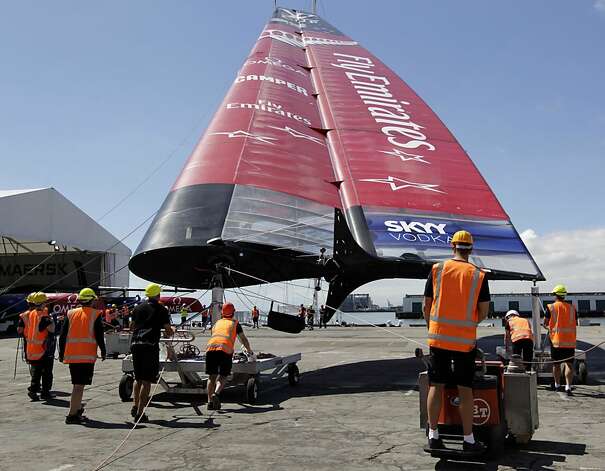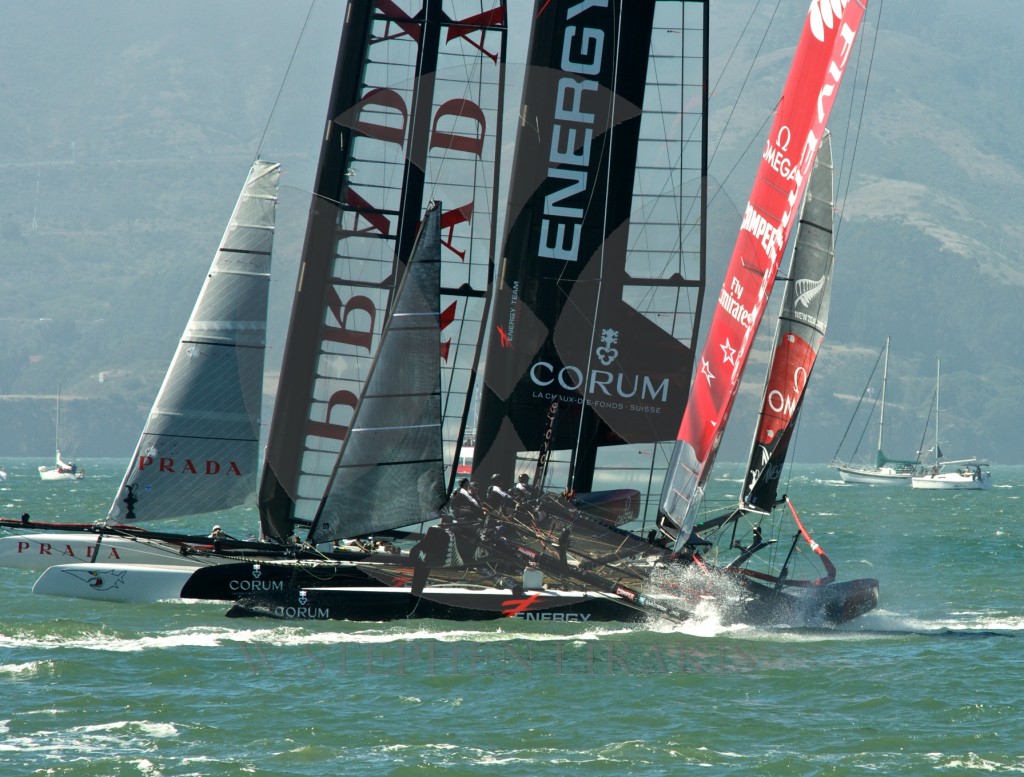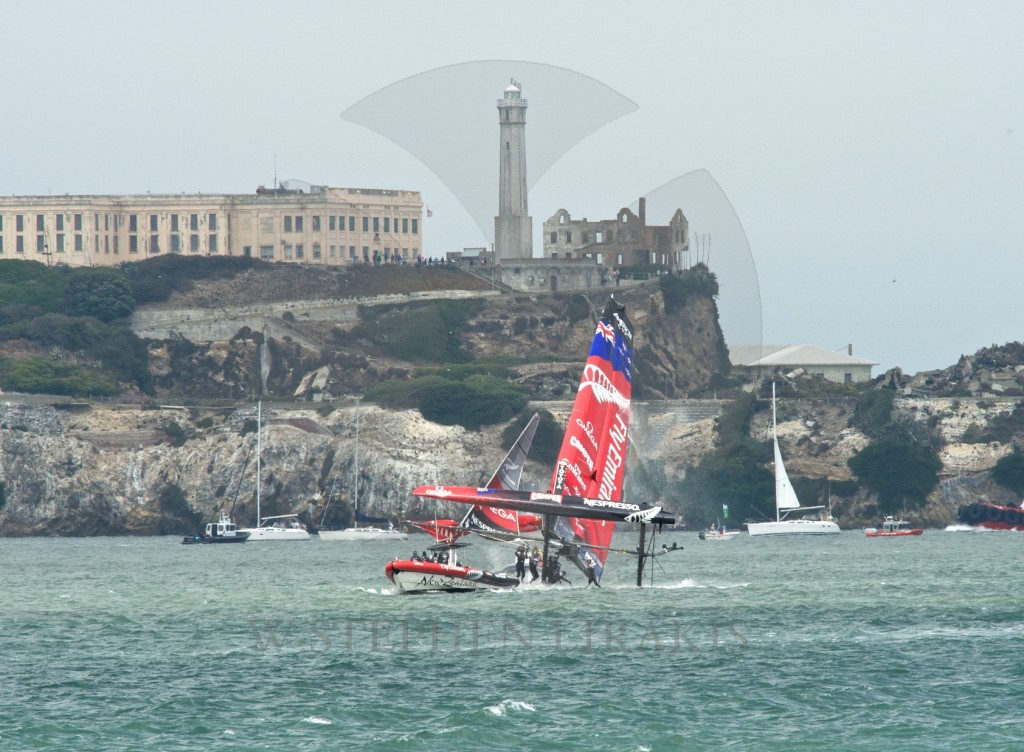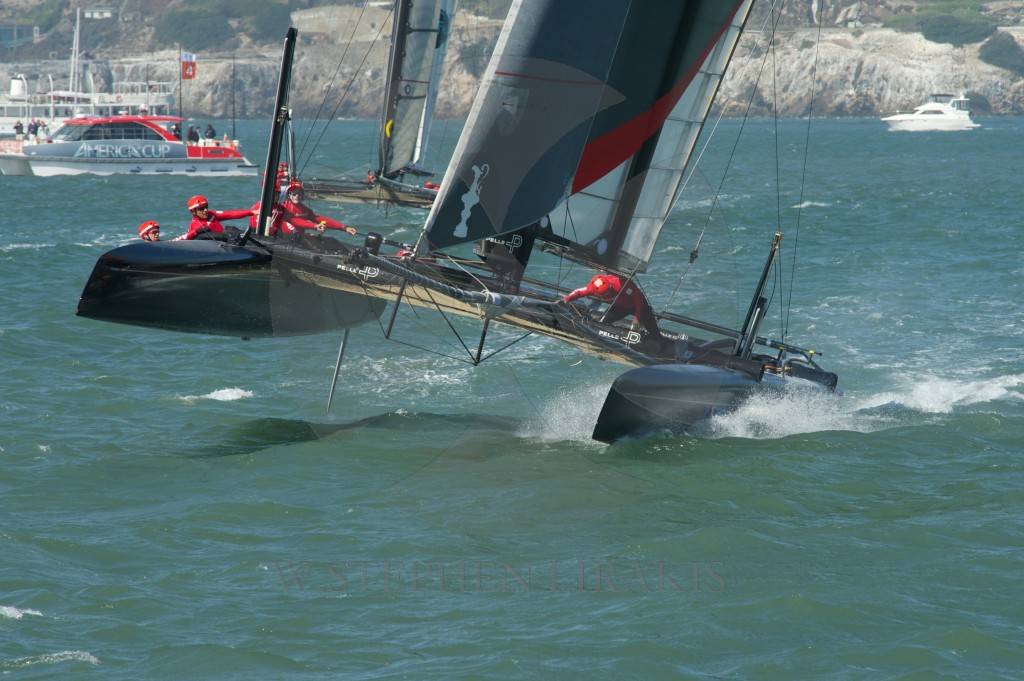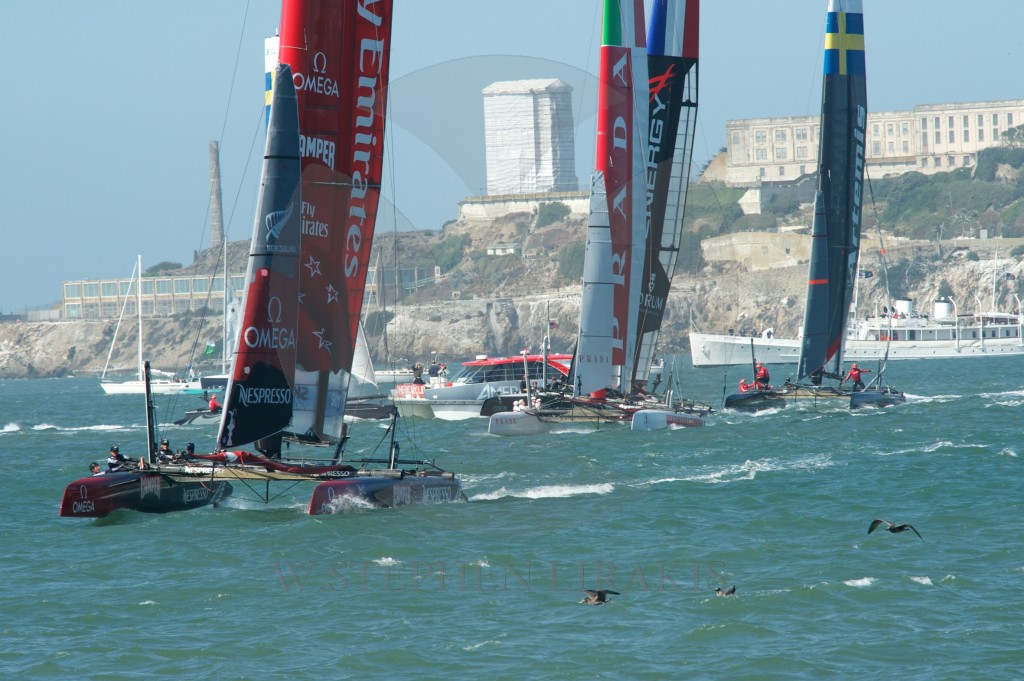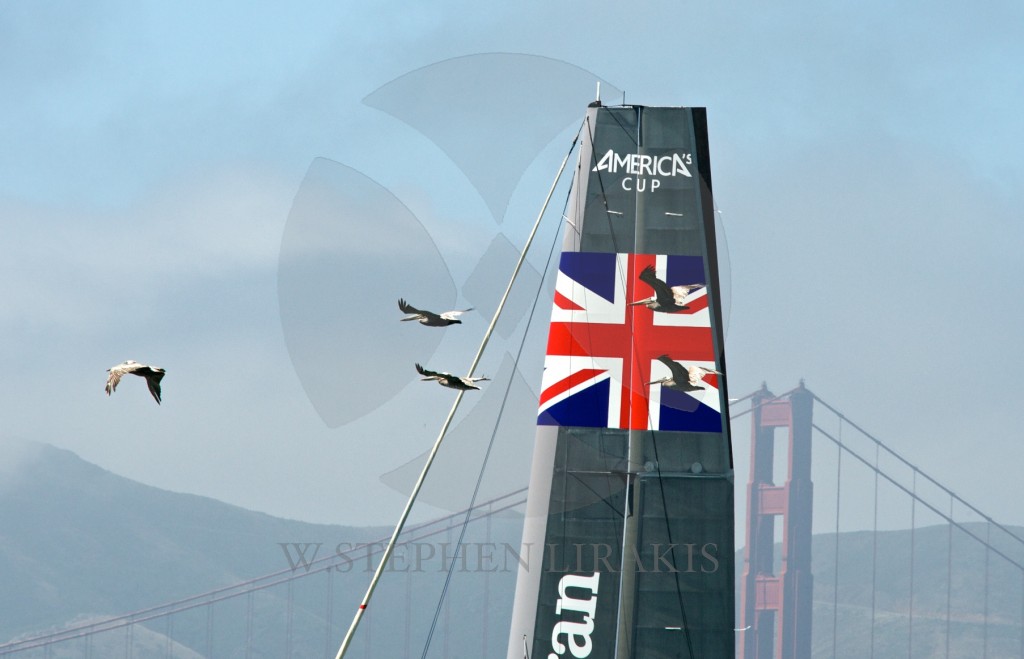and what about the city of san francisco?
New Zealand protest could affect the America’s Cup…forever
Published on July 1st, 2013 | by Editor
With so much promise, so much build-up, so desperate a desire to put the America’s Cup on a stage where it can draw unprecedented interest, the last thing the organizers want to hear is bad news. With the start on July 7, it must now be all about good news.
But the news is not all good.
Scuttlebutt’s legal analyst Cory E. Friedman has prepared a detailed tour of the facts which have led to the current Emirates Team New Zealand protest that could change the face of the America’s Cup forever…
“What a thing was this, too, which that mighty man wrought and endured in the carven horse, wherein all we chiefs of the Argives were sitting, bearing to the Trojans death and fate!” – Homer, Odyssey 4.271.
“It’s not cheating if you get away with it.” – Anon.
Make no mistake about it, the protest by ETNZ and Luna Rossa against the AC72 Class Rules changes mandating elevators (rudder trim tabs) recently imposed by Regatta Director Iain Murray is far from “minutia” and may be the most consequential in the history of the Cup as it affects not just one race but will almost certainly have a substantial if not deciding impact on the outcome of AC 34 itself.
As Artemis’ Tom Schnackenberg was recently quoted: “The [class] rule looked like it was conspiring against foiling, but it turns out the way it has been interpreted, you can.” The primary intentional impediment to foiling in the Class Rule was the ban on trim tabs (elevators) on the rudders. Murray has mandated them.
The first to figure out how to foil with sustained stability without elevators was ETNZ (and Luna Rossa which bought ETNZ’s design package). Indeed ETNZ has succeeded in perfecting the foil to foil jibe, the sailing equivalent of breaking the sound barrier. In contrast, while Oracle has been foiling around the Bay, it turns out it has been using elevators the class measurer twice ruled violated the Class Rule. Oracle has not demonstrated sustained stability without the heretofore banned elevators.
However, with the banned elevators, Oracle, which does not have the fuller bows, rigidity and more complex board control mechanisms ETNZ and Luna Rossa adopted to foil within the Class Rule, has significant aerodynamic and other speed advantages and may very well win the Cup, while without the elevators ETNZ or Luna Rossa are more likely to win.
Moreover, the rule change will have a substantial impact on future Cups. If one way or another the defender can obtain a decisively favorable Class Rule change at the last moment, it becomes hard to imagine how anyone will invest even half the approximately $100 million dollars challenging teams have invested in this Cup campaign. In retrospect, if this is the way it works, the New York Yacht Club, much criticized for high handedness, was negligent when it lost in 1983. It should have just jimmied the rules to ban Australia’s winged keel on some basis or other.
Nobody disputes that the Class Rules require unanimity for amendment and that two teams oppose the Class Rule change regarding elevators and claim that the elevators are dangerous. There is no provision of the Class Rules that allows the Regatta Director to impose changes based on “safety” or anything else. Instead, Murray hangs his hat upon an anodyne provision of the Protocol: “16 COMPLIANCE WITH APPLICABLE LAWS AND REGULATIONS, Competitors shall comply with all applicable laws and regulations of any city, state, national or other governmental authority having jurisdiction over the Event or part thereof.” Murray argues that the Event Permit is an “applicable law[ or] regulation” of the U.S. Government and that the elevators are required. Really?
Let’s take a look at the actual laws and regulations, so hang on, this may be a little drier than usual. When we are done ‘buttheads can decide for themselves who is right.
Events like the Cup are covered by 33 U.S.C. § 1233, which simply authorizes the U.S. Coast Guard to issue regulations. The Coast Guard has done so in 33 Code of Federal Regulations (CFR) Part 100.
So let’s see if section 16 will actually hold the water Murray claims it will. First of all, ‘buttheads who slog through the U.S. Code section and the CFR sections will not find any regulation that makes an event permit or the application attached a law or regulation of the United States. Only Congress can do that — or, more likely these days, not do it. Indeed, 33 CFR 110.15 which regulates the application for an event permit only requires the “who, what, where and when,” of the event. It does not require anything about class rules. If a safety plan is needed, the CFR does not require it and the application does not have a place for it. Indeed the Coast Guard Chief Petty Officer involved in this event permit has been quoted in the press to the effect that the Coast Guard does not care about or want to get involved with class rules. Thus, anything to do with Class Rules attached to the application is pure surplussage.
If there are any document that shows the Coast Guard demanded the safety information or anything about Class Rules, Murray should disclose it. Indeed, because the Protocol provides that the protest is under the Federal Arbitration Act (FAA), the Jury and the parties, upon a request to the Jury, have subpoena power pursuant to 9 USC § 7 and can subpoena any such document. The parties can also obtain it from the Coast Guard under FOIA.
It is not at all clear the Coast Guard demanded more than general safety information as the panel headed by Murray to investigate the Artemis/Simpson tragedy produced no investigation at all, unlike the recent Safety at Sea investigations of fatalities. The claim that liability was the issue is absurd. It was not a problem with other recent investigations and if it is a real issue ACEA/ACRM can afford insurance. The fact that ACEA/ACRM refused to resolve potential liability neatly deep sixed the investigation.
Obviously, there has been a cover up of what the Artemis helmsman’s Dad first reported (called untrue by the powers that be) and now confirmed by Loick Peyron, the one honest man in this whole sorry mess. What Peyron reports, together with what was common knowledge at the time about the structural problems of the Artemis boat, arguably suggest the elements of involuntary manslaughter in California. Obviously, there is plenty to cover up and plenty of people with an interest in keeping it that way at least until the event is finished. Everybody ought to come clean about what happened.
Let’s move on to the Event Permit itself. 33 CFR 100.30 merely provides that the application for an event permit must be approved. That is all. It does not transform the approved application into a law or regulation, just an approved Event Permit.
The Event Permit itself does no more. The very first line of the Event Permit recites: “Issuing a permit does not imply any endorsement of the activity, guarantee that it will be accident free, or make the Coast Guard responsible for the safety of participants.” That does not sound like a law or regulation. Indeed it is a ringing non-endorsement. The second page recites that: “Marine event sponsors are responsible for the safety of the events.” While it does provide that “You are expected to conduct your event in accordance with the Marine Event Permit Application, including all attachments …”, that is only an expectation. It does not say “You are required.” The argument that Murray can attach anything he wants to the application and thereby transform anything he pleases into a requirement of the event is obviously not what the boiler plate printed language of the Permit could possibly intend. If it was, Murray could give himself a raise by simply attaching it to the application.
Further along the Event Permit spells it out: “You are required to immediately inform the Coast Guard if circumstances necessitate a change in any component of your safety plan along with your assessment on how the change affects the safety of your event.” Note that the Event Permit does not terminate if the protest is granted and the Class Rules change is nullified. All that happens is that Murray has to notify the Coast Guard of the change and say either: “A. It is not a problem, we can deal with it; or B. It is a show stopper, we cannot safely proceed, shut us down.” The choice is his. The Coast Guard will presumably evaluate his information and act appropriately.
The Event Permit does provide that: “If at any point, your event becomes unsafe due to weather, vessel traffic, irresponsibility on the part of the sponsor or participants, failure to meet the conditions in the Marine Event Permit, or any other reason,…” the event can be terminated. However, termination requires a determination that the event has become unsafe, which is a pretty heavy finding which should terminate the event no matter what the reason. “Condition” is a legal term of art. Unless the Event Permit explicitly says something is a “condition” or that it is on “condition,” it is not a condition. The Class Rules are not a “condition.” In short, the Event Permit still is not a law or regulation. It is just a permit – like your driving permit. Drive illegally or unsafely and you will lose it — same as with the Event Permit.
Tellingly, the only parts of the application actually cut and pasted into Event Permit itself, to which the application is appended, are the two maps of the race area, not anything to do with the Class Rules.
‘Buttheads can read the regulation and Event Permit themselves, but it is pretty clear that there is no law or regulation that requires the Class Rules change and Murray’s position does not hold water.
One interesting question is how a jury that does not include a single U.S. lawyer can feel confident dealing with this legal question regarding U.S. administrative law. The Jury does include an Australian barrister and a New Zealand barrister, as well as a former British magistrate, but the U.S. legal system separated from the British system in 1783 when George III foolishly declared independence from the United States so that future Brits would have to answer to bureaucrats in Brussels. That was before the first Europeans settled in either Australia or New Zealand. Our systems are now quite different.
The solution is not that difficult. If a U.S. court has to rule on an issue controlled by foreign law the parties would each call expert witnesses in that area of the relevant law – typically law professors who have written on the subject (in this case U.S. administrative law) – who can testify as to what the law is. The point is that the Jury needs help and should get it from the parties.
Last and least is a bizarre provision of the Protocol which has been used as a crude weapon and as an excuse for not going to court under the FAA if the Jury exceeds its jurisdiction. Obviously, in the ordinary case, one would go to arbitration first and see if you win, rather than attempting an end run around the arbitration. Something would have to really wrong with the arbitration process to attempt such an end run.
The bizarre provision, section 15.14, purports to disqualify any team that goes to court on a matter the Jury has jurisdiction of, which explicitly does not include anything having to do with the Deed of Gift. The provision was apparently drafted by a Kiwi lawyer who is not admitted in the U.S. whose “watermark” is the prissy Victorian phrase, “for the avoidance of doubt,” which I have never seen in a U.S. document and Kiwi’s tell me they have never seen except in the impenetrable documents drafted by this particular Kiwi lawyer.
For all I know such a forfeiture is proper in New Zealand. In the U.S. it is so bizarre that, on a quick and not exhaustive look, I cannot find anything similar in the Federal and New York Lexis databases, except statutes and cases that say that a party cannot be penalized for exercising a statutory right, in this case, the right to go to court under the FAA. (‘Buttheads with time on their hands and access to Lexis, Westlaw or “the books,” are encouraged to see if they have any luck – let me know what you find.) Moreover, for hundreds of years lawyer have been trained to honor the equitable maxim that “equity abhors a forfeiture.”
The enforceability of such a forfeiture provision is further called into doubt by the fact that the FAA provides in 9 USC § 3 the proper remedy for going around arbitration to court. That is a stay in aid of arbitration, which stops the court action and sends the parties back to arbitration. In any event, a court hearing a matter under the FAA would likely grant a temporary restraining order barring the enforcement of a forfeiture provision like section 15.14 until the matter was fully litigated. If a party does not want to go to court, it does not have to, but that provision of the Protocol should not be a major consideration or excuse. What the teams do is between them and their sponsors, in the case of ETNZ including New Zealand’s taxpayers.
– See more at: http://www.sailingscuttlebutt.com/2013/07/01/new-zealand-protest-could-affect-the-americas-cup-forever/?utm_medium=email&utm_campaign=Scuttlebutt+3872&utm_content=Scuttlebutt+3872+CID_587e57a1a567c7e7aa9b46369c9ebbfd&utm_source=Email%20Newsletter&utm_term=Read%20on#more
